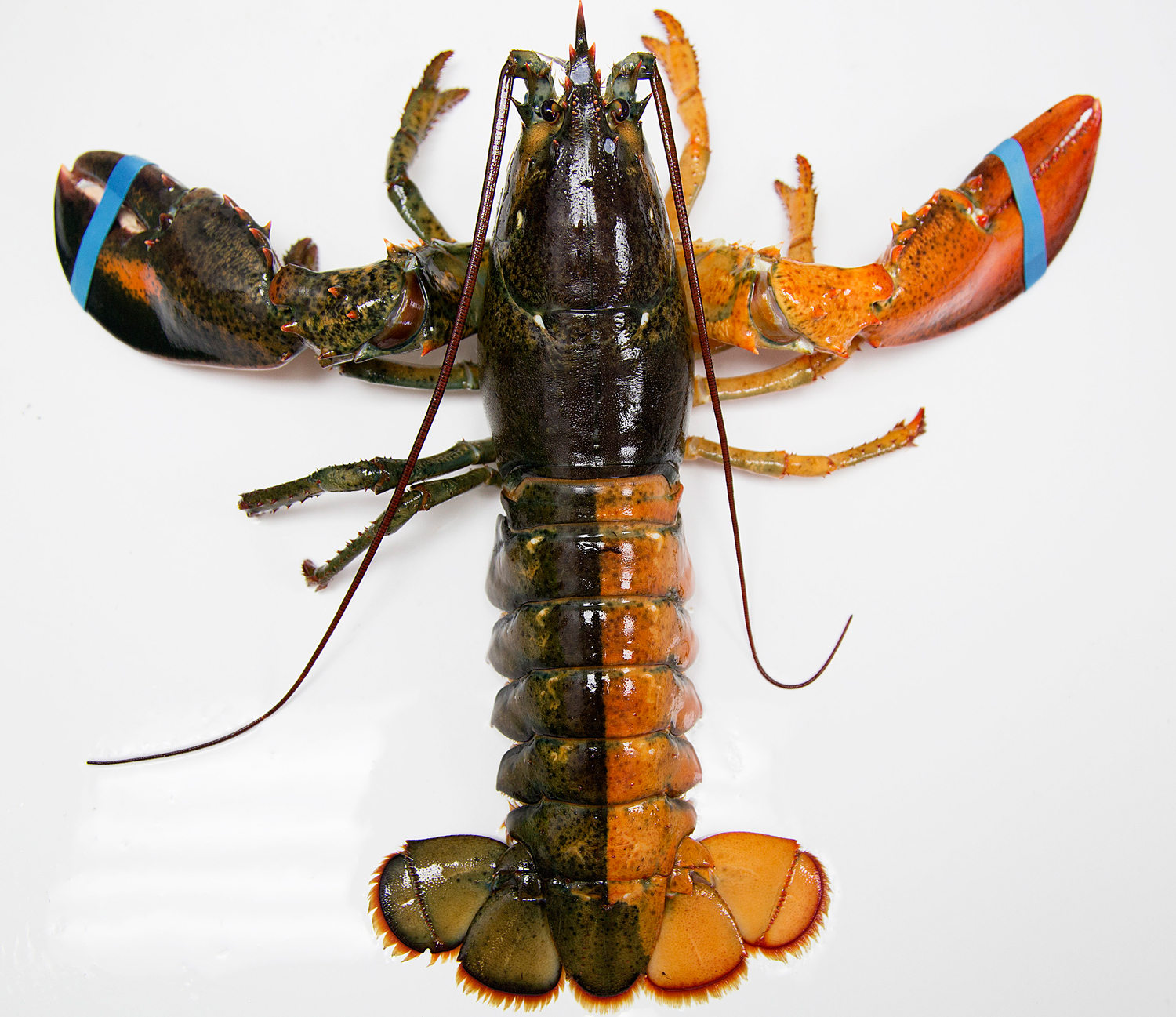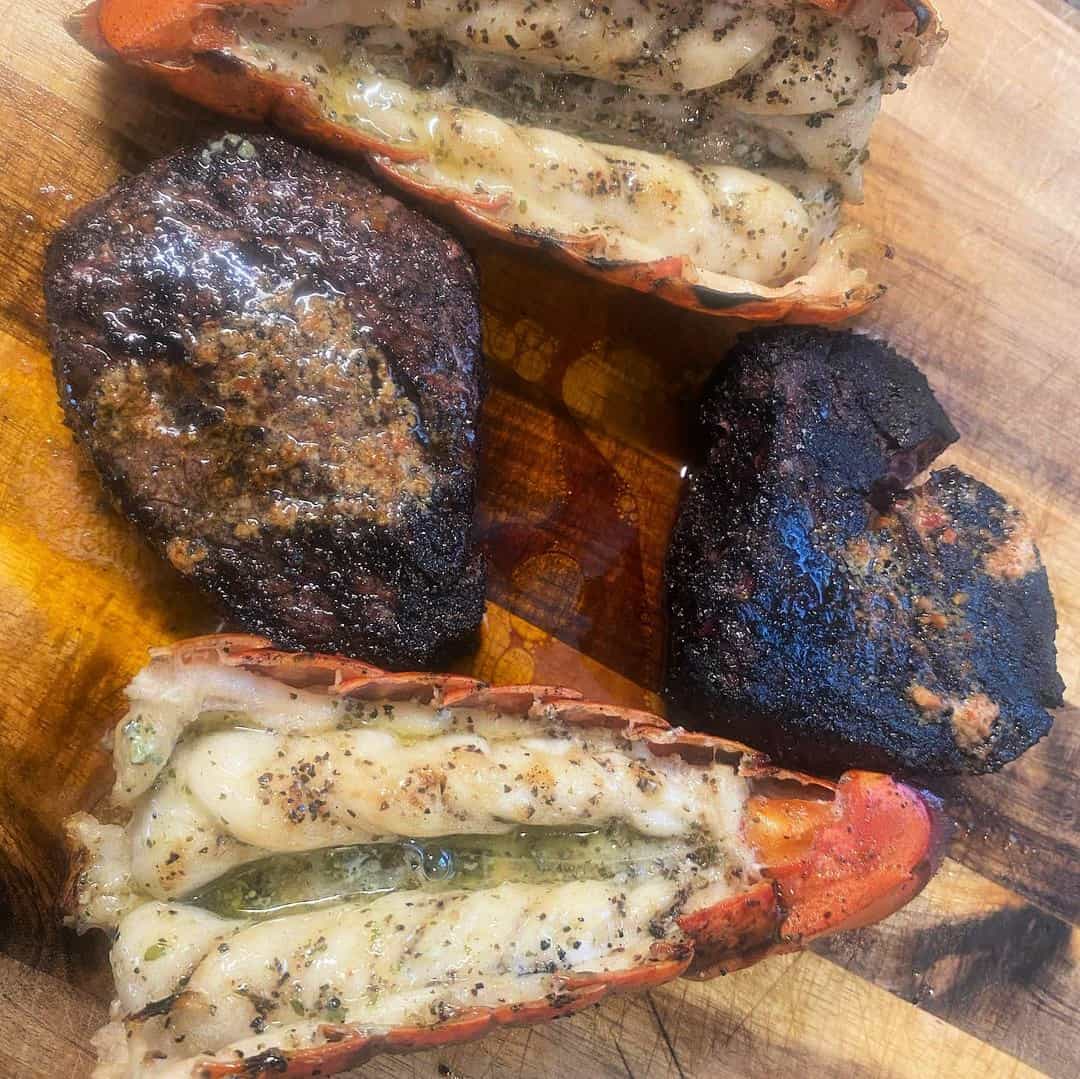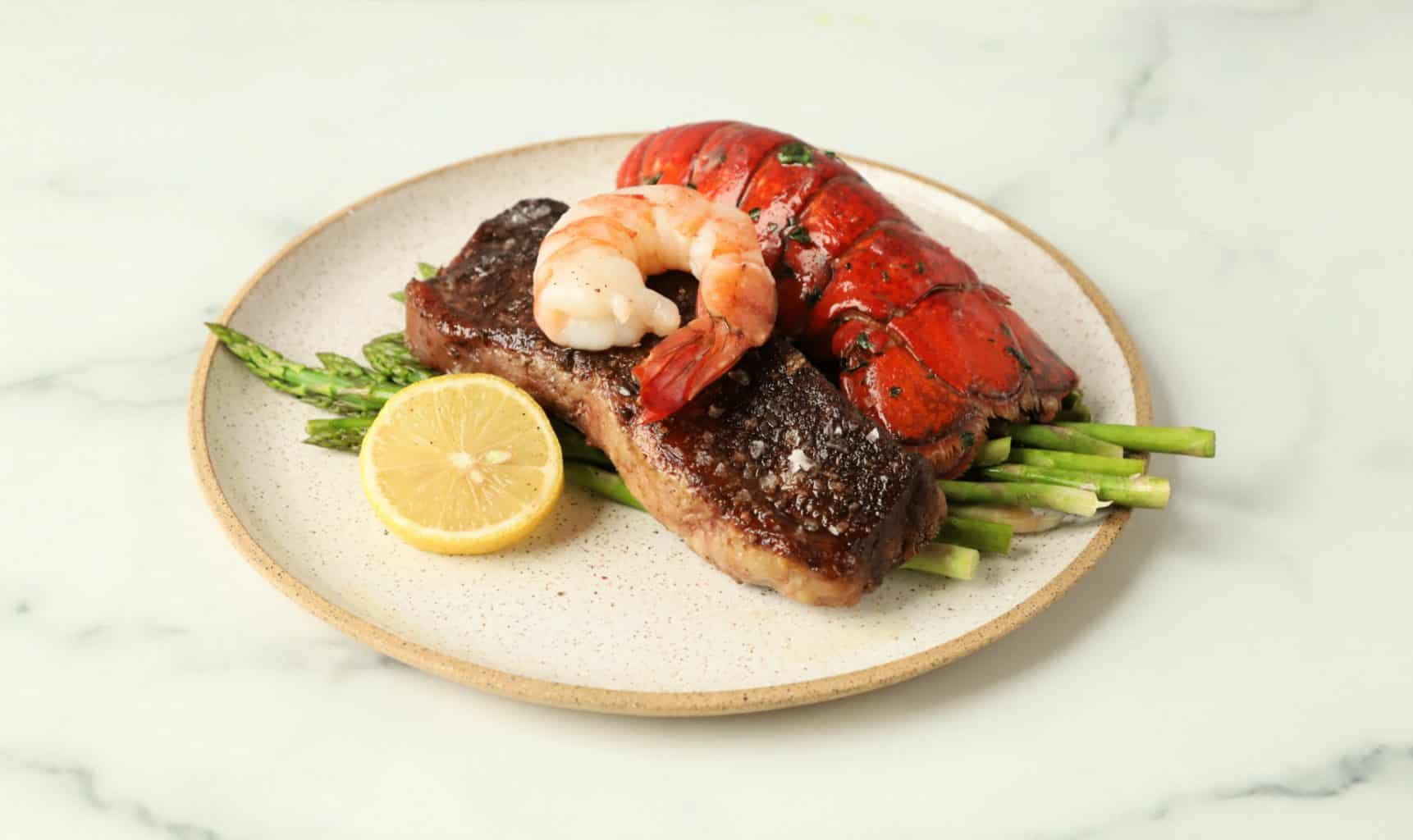Lobsters are iconic creatures of the sea. Their massive claws and armored bodies represent the mysteries of the deep. But just how big do these ocean bugs grow? Let’s dive into the sizes of different lobsters from tiny claw crackers to giant trophy catches.
Average Length of a Lobster
The American lobster (Homarus americanus) is the most common species caught for food. An adult typically measures 12 inches long from the tip of its body to the end of its tail Their average weight is around 2 pounds.
Males tend to be slightly larger than females. A lobster’s size is measured based on the length of its carapace which is the part of the shell that covers the head and upper body.
Minimum and Maximum Legal Size Limits
There are regulations around minimum and maximum lobster sizes that can be legally harvested. In Maine the minimum legal size is 3 1/4 inches carapace length. The maximum is 5 inches. Anything smaller than 3 1/4 inches is tossed back to grow. Anything over 5 inches is also released as it is considered a breeder lobster essential for maintaining future stocks.
Factors Affecting Growth Rate
Many factors influence a lobster’s rate of growth and ultimate size. These include:
-
Age: It takes about 6-8 years for a lobster to reach 1 pound in weight. The older a lobster gets, the bigger it grows.
-
Molting: Lobsters must periodically shed their rigid exoskeletons to allow for growth. More frequent molting enables faster growth.
-
Temperature: Warmer temperatures increase molting frequency and growth rate.
-
Diet: Lobsters fed nutrient-rich diets grow faster and larger.
-
Genetics: Some genetic lines simply grow bigger than others.
Average Sizes by Name
The seafood industry has size classifications to help buyers choose lobsters based on expected meat content. Here are the common market sizes:
- Chicken lobster: 1 to 1.25 lbs
- Quarter: 1.25 to 1.5 lbs
- Half: 1.5 to 1.75 lbs
- Deuce: 2 to 3 lbs
- Jumbo: Over 3 lbs
Chicken lobsters average about 9 inches long. Quarters reach around 10 inches. Halves are typically 11-12 inches. Deuces can be over a foot long. Jumbos may exceed 15 inches.
Outliers: Record-Setting Lobster Sizes
While today’s average lobster lengths top out around 12 inches, lobsters over 20 inches long have been recorded throughout history.
-
The largest lobster ever documented was caught in Nova Scotia in 1977. It was an incredible 44 inches long and weighed over 40 pounds!
-
In the 1920s, a 37 inch, 32 pound lobster was captured off the Massachusetts coast.
-
A 27 pound lobster measuring 3 feet in length was reeled in off Maine in the 1930s.
Even in recent years, lobsters over 20 inches and 20 pounds have made headlines when caught.
Back in the late 1800s and early 1900s, lobsters over 20 pounds were not unheard of. They were referred to as “ten-dollar lobsters” based on their premium market value. Such trophy lobsters are rare today due to heavy fishing pressures. But they show the immense growth potential of lobsters given enough time.
Why Bigger Lobsters Used to be More Common
In the past, it was more likely for lobsters to live long enough to reach mammoth proportions. Here’s why:
-
Limited fishing: Commercial lobster fishing did not take off until the late 1800s. For centuries prior, lobster populations were relatively unfished, enabling maximum lifespans.
-
No size restrictions: Early lobster fisheries captured all sizes with no regulations. Huge lobsters were kept rather than released as they are today.
-
Fewer predators: Large predator fish like Atlantic cod that fed on lobsters have declined, leaving more lobsters to grow bigger.
So while 20+ pound lobsters grab headlines today as rare oddities, they were once prized catches that helped build the lobstering industry.
Size Regulations Protect Large Lobsters
Current regulations prohibit harvesting lobsters over 5 inches long and egg-bearing females for conservation purposes. Limiting fishing of large, reproductive lobsters helps maintain stocks. These big lobsters also contribute disproportionately to future generations since larger females produce exponentially more eggs.
However, regulations have made mega lobsters a rarity. Most lobsters go to market between the maximum legal size of 5 inches up to the 6-8 inch range. Anything above that is unusual now compared to decades past.
Does Size Affect Lobster Quality?
There is debate around whether small or large lobsters taste better. Some argue that bigger lobsters are tougher and less flavorful. But this perception often results from improper cooking. Large lobsters require adjusted cooking times to bring out their best texture and taste.
When cooked correctly, bigger lobsters can offer a richer flavor, denser texture, and higher meat yield for your money. However, smaller lobsters may be more approachable for novice lobster eaters. It comes down to personal eating preferences.
Picking the Right Lobster Size
Consider how you plan to enjoy your lobster when choosing size. Here are some general guidelines:
-
For individual meals, pick lobsters around 1.5 pounds. They are easy to handle but still have ample meat.
-
Bigger lobsters like 3 pound deuces work better for multiple people to share.
-
Prioritize meat density in dishes where lobster is chopped/shredded like rolls, pasta, etc. Go for larger sizes.
-
Highlight delicate flavor in light dishes like seafood salads or buttery baked lobster tails. Lean towards chicken or quarter sizes.
-
Splurge on trophy jumbos for special occasions like proposals, anniversaries, etc.
No matter the size, be sure to source high-quality hard-shell live lobsters and use proper cooking techniques to enjoy your catch’s full decadence. With sound preparation, lobsters of any size can make for a memorable meal.
So now you know that while average lobsters are around 12 inches, these claws can crack to epic proportions under the right conditions. Part of the fun of lobstering is that you never know what giant you might pull up next!

Steak and Lobster Tails
If you’re really aiming to impress, serve up restaurant-quality steak and lobster for dinner. A brilliant red lobster tail makes a statement on the plate. Add a homemade oven-broiled steak and you have an all-around winning combination for every palate that’ll satisfy even the most pretentious New England seafood chef.
We make this show-stopping dinner easy to pull off with our ready-to-prepare Captain’s Tails and Turf package. This combo includes two buttery-soft fillets with the meatiest Atlantic cold water lobster tails and a zesty key lime pie to finish things off.
Here’s how to prepare steak and lobster tails for dinner:
First, prep and season your lobster.
- Make a deep lengthwise cut in the top of the lobster tails.
- Gently pry the shells apart and season the meat with melted butter and a sprinkle of salt and pepper. If you like, you can add a dusting of Old Bay seasoning, smoked paprika, or any dried herb you love.
(For more tips on how to properly prepare lobster, Checkout our recipe How to cook Lobster Tails .)
Meanwhile, fire up your broiler to high and prepare the steaks.
- Place an oven rack two to three inches from the heat source.
- Place the steaks on a baking sheet and generously season both sides with salt and pepper.
- Place the baking sheet under the broiler.
- Use this chart to determine the best cooking time for your steaks.
- Remove the steaks from the oven just before they reach your desired doneness, transfer to a cutting board, cover with aluminum foil, and let the meat rest while you broil the lobster.
Cook the lobster.
- Place the prepared lobster tails on the same baking sheet.
- Place them under the broiler and cook until the meat is opaque, about 5 to 10 minutes.
Finally, plate everything up and dig in!

Steak and scallops might be a more unusual approach to surf and turf, but it still fits the bill. In fact, plump, fresh sea scallops have a soft and flaky texture that pairs well with steak.
Since scallops are so naturally buttery on their own, you can swap the more traditional fillet with a high-quality New York strip steak.
This surf and turf pairing calls for the stovetop. Use a large, heavy-bottomed cast-iron pan or skillet to sear both your steaks and scallops.
Here’s how to cook it:
- First, pat the scallops and steaks dry with paper towels and season both sides with salt and pepper. Brush them with a thin coating of canola oil or another high-heat oil.
- Heat your pan over medium-high heat for a good 3 to 5 minutes, until hot.
- Gently place the steaks in the skillet and sear for 4 minutes, or until you have a nice brown crust on one side. Use tongs to flip the steaks and cook for 3 to 4 minutes on the other side.
- Add a 2-tablespoon pat of butter to the skillet and as it melts, spoon the butter over the steaks for another minute.
- Remove the steaks from the skillet when they are 5 to 10 degrees away from your desired doneness. Place on a cutting board, cover with aluminum foil, and rest while you sear the scallops.
- Return the skillet to medium-high heat.
- When the oil is hot, gently place the scallops into the skillet, leaving several inches of space between each scallop.
- Sear for 2 minutes undisturbed, then add 1 tablespoon of butter to and gently flip the scallops with tongs or a thin fish spatula to sear for another minute, until cooked through but still soft in the center.
Plate up your steaks and scallops and serve hot!
Best Surf and Turf Recipes
To get your planning process started, here are some of the best surf and turf pairings to try at home. These pairings are restaurant-quality and easier than you might think to pull together.
Steak and shrimp is a beloved surf and turf pairing. Shrimp are naturally sweet and light to balance the richness of the steak. Plus, perfectly cooked shrimp add a nice pop of pale pink to the plate for an effortless (and edible) decoration.

Filet mignon is the perfect accompaniment to large, juicy shrimp. This buttery-soft cut is tender and juicy when cooked on the grill. Use our tips to know the exact moment to pull your steaks from the flames.
And while you have the grill fired up, assemble your shrimp on skewers for a quick and easy preparation. If you choose large shrimp two or three per person should be sufficient with the steak.
And if you plan to serve the shrimp on the skewer, opt for short wooden skewers that will fit nicely on your dinner plates. Be sure to soak the wood for at least 30 minutes before grilling to prevent charring.
When you’re ready to cook:
- Preheat a gas or charcoal grill over medium-high heat.
- Pat your steaks and shrimp dry and season both sides with salt and pepper. Brush with a thin coating of neutral oil.
- Place the steaks on the grill and cook according to the times in this chart, flipping once with tongs.
- After you’ve removed the steak to rest, place the shrimp skewers on the grill for 1 to 2 minutes per side.
- Remove the shrimp when they are bright pink and curled into a “C” shape. Keep a close eye on the shrimp, as they cook quickly.
Or, If you like, you can add a boost of flavor by marinating the shrimp for 15 minutes in a simple mixture of:
- Citrus juice (lemon, orange or lime juice)
- A teaspoon of dried herbs (basil, oregano, thyme or parsley)
- A minced garlic clove.
While you can technically use any size shrimp for surf and turf, you’ll get the most flavor and a stunning presentation with colossal shrimp. These are best for grilling as they can withstand direct heat without overcooking or turning rubbery. Plus, they won’t fall through the grates!
Also Read: Shrimp Sizing Guide: Large, Jumbo, Colossal, And Beyond
Big Sad 1900 & Uce Lee – Lobster Ravioli
FAQ
What is the maximum size of a lobster?
A lobster may live 100 years, grow to 5 feet, and weigh as much as 45 pounds! Officially, the largest lobster ever caught weighed 44 pounds. A lobster’s age is approximately his weight multiplied by 4, plus 3 years.
How old is a 20lb lobster?
Weight and age
George weighed 20 pounds (9.1 kg), and was estimated to be 140 years old, placing his year of birth around 1869. The age of lobsters can be difficult to determine, but can be estimated based on molting rate and the increase in size after a molt.
What is the largest lobster ever recorded?
American lobsters are larger and heavier than their European relatives. A metre-long specimen, caught off the coast of Nova Scotia, Canada in 1977, weighed in at 20.14 kilogrammes (44lbs 6oz). This is the largest lobster ever caught and currently holds the record as the world’s heaviest marine crustacean.
How much does a lobster weigh?
The maximum legal length of a lobster is 5 inches carapace-length; which are called “jumbos”. The maximum size limit is regulated to protect the breeding stock. A small lobster will weigh about 1 pound, and a large lobster will weigh about 3 to 4 pounds. The most common and well-liked Maine lobster size is between 1 1/4 and 1 1/2 pounds.
How long is a lobster?
While today’s average lobster lengths top out around 12 inches, lobsters over 20 inches long have been recorded throughout history. The largest lobster ever documented was caught in Nova Scotia in 1977. It was an incredible 44 inches long and weighed over 40 pounds! In the 1920s, a 37 inch, 32 pound lobster was captured off the Massachusetts coast.
How big is a lobster in Maine?
A lobster’s size is measured based on the length of its carapace, which is the part of the shell that covers the head and upper body. There are regulations around minimum and maximum lobster sizes that can be legally harvested. In Maine, the minimum legal size is 3 1/4 inches carapace length. The maximum is 5 inches.
What is the minimum size of a lobster?
The minimum size is designed to make sure that all lobsters are mature enough to breed at least once before they are harvested. The maximum size limit is designed to protect the breeding stock. A minimum size lobster will weigh around 1 lb., while a maximum size lobster will weigh between 3-4 lbs.
How do you measure a lobster?
The carapace or body of each lobster is measured using this gauge. The length is determined by measuring from the rear of the eye to the rear of the shell or carapace to ensure accuracy. The minimum legal length is 3 1/4 inches. The maximum is 5 inches. Save my name, email, and website in this browser for the next time I comment.
How big should a lobster shell be?
According to the Maine Lobstermen’s Community Alliance, lobsters that are legally catchable must have a shell length between 3-1/4 inches and 5 inches. Any lobsters caught outside of this size range must be returned to the ocean to allow them to grow and reproduce. How do I choose the right lobster size for two people?
